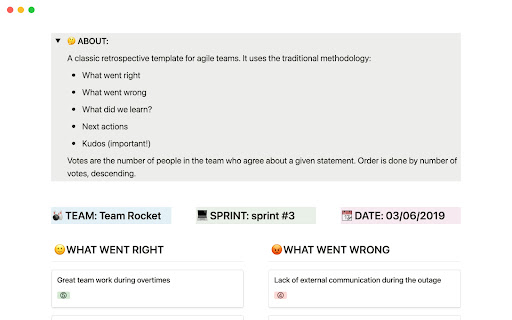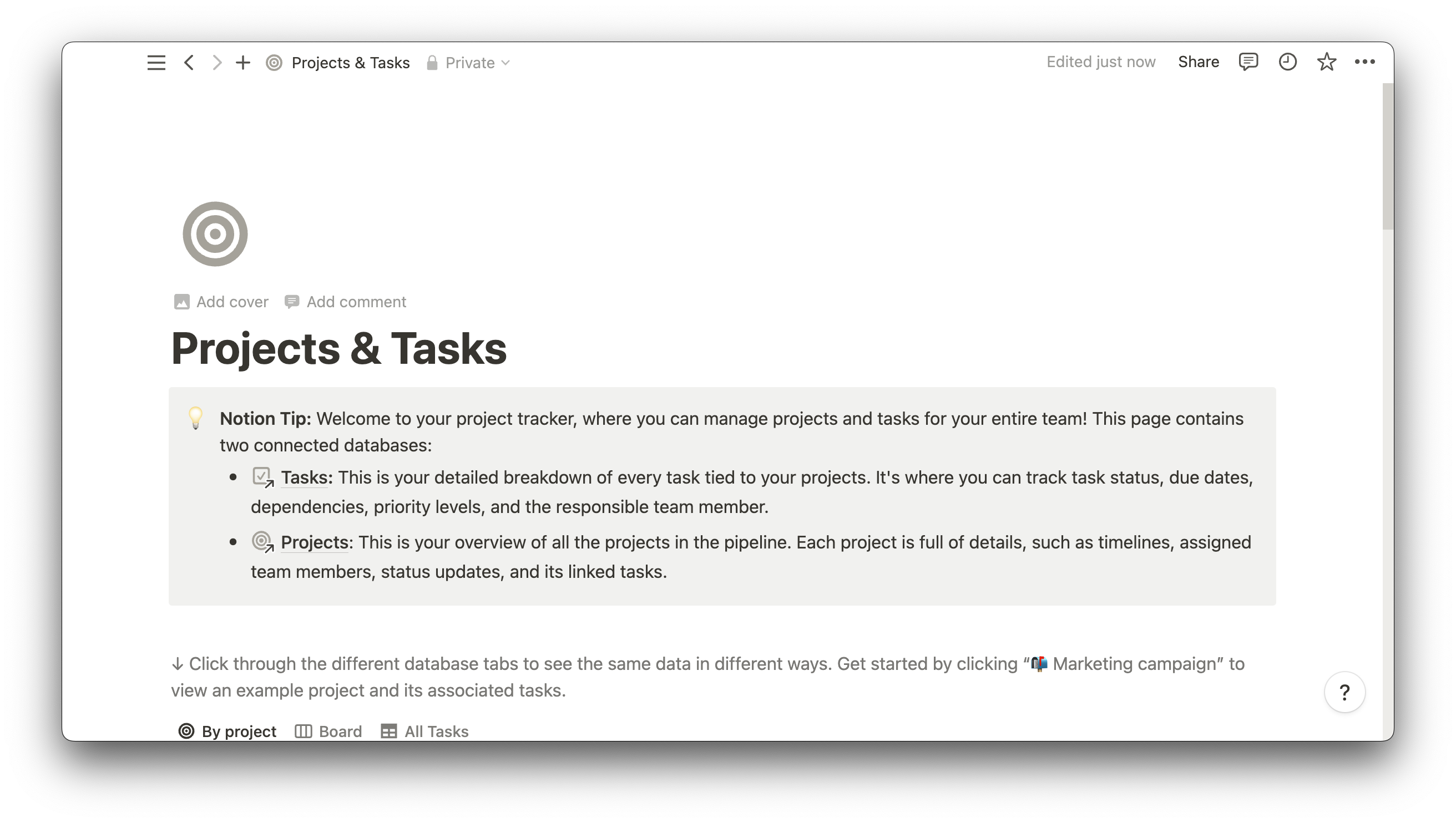How do the best teams deliver stellar results project after project?
It's not magic. It's Agile.
Think of Agile as your GPS for project management. It gets you to your destination faster, helping you avoid delays and unplanned detours.
But this fast-paced methodology has a critical pit stop: the Agile retrospective, a quick team huddle where everyone shares their thoughts about the last sprint.
What’s a retrospective in Agile?
An Agile retrospective is a team meeting held at the end of each Agile sprint. It provides an opportunity for the team to reflect on outcomes before the next project or sprint begins. Topics include what went well, what didn't, and where there's room for improvement.

Agile retrospectives versus postmortems
Agile differs from the Waterfall methodology, which uses postmortems instead of retrospectives. In Waterfall, teams must complete Task A before Task B, moving in a clear progression, like a waterfall. When closing out projects, teams host postmortem meetings, which are full-scope reviews of a project’s details after completion that highlight where a project failed so teams can avoid these issues in the future.
But for Agile, these meetings come at the end of a sprint, not necessarily the whole project. And they aim to increase efficiency and effectiveness while also analyzing successes and failures.
The following table illuminates major differences.

When to perform Agile retrospectives
Agile retrospectives should occur immediately after the end of a sprint. This allows team members to reflect while the sprint is still fresh in their minds.
The frequency of retrospectives varies based on project requirements and team preferences, but incorporating regular retrospectives facilitates constant improvement by identifying weaknesses or wasteful processes.

Benefits of Agile retrospectives
Hosting team retrospectives offers many benefits to Agile project management, including:
Continuous improvement — Agile retrospectives provide opportunities to learn and improve work processes. This constant evolution and adaptation is a critical component of the Agile methodology, allowing teams to better execute each iteration.
Alignment — teams develop a shared understanding of their work. This enhances cohesion and promotes alignment on project objectives for stronger collaboration.
Problem identification — retrospectives allow teams to identify and address issues on time. This helps prevent problems from becoming major obstacles.
Increased efficiency — regular review can increase efficiency over time, reducing waste and improving project outcomes.
Positive culture — retrospectives promote a culture of transparency, learning, and mutual respect. All these aspects contribute to a healthier team environment.
Better quality — teams refine processes to improve the quality of their work. Over time, this leads to better outcomes.
Customer satisfaction — improved efficiency, quality, and team alignment often result in better outcomes. When there are better outcomes, you’ll see greater customer satisfaction.
Challenges of Agile retrospectives
Despite their many benefits, Agile retrospectives aren't without their unique challenges. Navigating these difficulties can test a team's resilience, communication, and willingness to adapt.
Here are a few common challenges that teams often face:
Lack of participation — teams may need encouragement to participate during retrospectives. This could be due to some team members feeling uncomfortable or unsure about being completely honest about what went wrong.
Dominant voices — sometimes, a few team members dominate the conversation. These loud voices can drown out others’ perspectives.
Repetition and stagnation — teams sometimes want to discuss the same issues every retrospective, and this repetition leads to stagnation. Innovation and improvement can halt if fresh ideas and approaches aren't encouraged or if teams dwell on repeated errors instead of finding creative solutions.

How to run retrospective meetings in Agile
Running a compelling Agile retrospective involves six essential steps:
Set the stage — begin by setting clear goals for the meeting. Consider using an Agile retrospective template to get everyone on the same page, and establish an open, non-judgmental environment.
Gather data — collect information about the recent sprint or project phase. This could include completed tasks, metrics, or any challenges experienced. Providing this data gives a factual basis to the discussion.
Generate insights — encourage team members to share their observations using frameworks like the 4 Ls (Liked, Learned, Lacked, and Longed for). Afterward, draw conclusions from the data. These could pertain to what went well, what didn't, or where there's room for improvement.
Decide what to do — the team decides on specific actions based on the insights generated. All items should be clear, realistic, and assigned to team members. Make plans to follow up on the action items.
Close the retrospective — summarize the key points discussed. Make sure everyone understands upcoming responsibilities by answering questions and aligning on objectives to avoid confusion later on.
Follow up — after the retrospective, watch the progress of the agreed-upon actions. Ensure the team implements improvement solutions, following up to make sure retrospectives lead to real change.
Agile retrospectives: 8 tips
Here are eight strategies to keep in mind during Agile retrospectives.
1. Encourage participation
Ensure that everyone has a voice during the retrospective. An open environment promotes engagement among team members. Be aware of quieter team members, creating a safe space where even shy members feel comfortable sharing their thoughts. It might help to request that everyone comes with at least one idea for improvement to encourage sharing from everyone.
2. Keep it positive
Avoid fostering a blame culture. Focus on improvement and learning rather than criticizing, since pointing fingers can lead to team members feeling defensive and less open to sharing. Promote a growth mindset, emphasizing that feedback is an opportunity to evolve and learn from any past mistakes for everyone involved.
3. Meet regularly
Conduct retrospectives to ensure continuous improvement. If your team completes monthly sprints, meet monthly. Repeated reflection is critical to the Agile framework.
4. Be specific
Encourage team members to give specific feedback and actionable insights. Refrain from vague and general feedback, as it doesn't lead to concrete improvements.
5. Follow through
Always follow up on the action items decided on in retrospectives. Follow-up is necessary for a retrospective to feel worthwhile and maintain team trust. Plus, it shows employees you’re hearing their concerns and taking them seriously, which improves team trust and engagement.
6. Use data
Use concrete data to bolster discussions and avoid bias. Avoid basing discussions on subjective perceptions, instead backing up all observations with data. When used effectively, data makes it easier to arrive at a consensus and prioritize actions.
And if you’re working with subjective measurements like the quality of a piece of writing or design, try to find a way to assign numbers to these to track progress, like a 1–5 ranking for quality or a rubric to follow.
7. Keep it focused
Keep the discussion focused on the team's practices and the project, not individuals. Avoid personal criticisms when discussing solutions and potential improvements.
8. Maintain confidentiality
Respect the team's privacy. What's discussed in a retrospective should stay within the team, as breaching confidentiality can erode trust, making future retrospectives less candid and effective.
The best Agile tools and templates for your team
Notion's templates are an indispensable resource to enhance your Agile team's practices. With various project management tools, Notion empowers your team to succeed. The Agile retrospective template streamlines your sessions, promotes open communication, and ensures actionable feedback. Sign up for Notion today to bring your Agile practices to new heights.





